I set up what I believe to be a working royer converter, however I did modify it to use a pair of op amps rather than transistors (see below.)
Anyway, instead of hooking the secondary to an lc tank, I hooked it up to a 3 stage full wave Cockcroft–Walton generator. My reasoning was that it would oscillate at a very high frequency and maximize power transfer as best it could.
I measured the ac voltage going into the CW generator to be ~33 volts. The dc voltage coming out was ~315 volts.
I suspect the CW generator to be exhibiting some kind of resonant rise, but I would be very interested to here a more thorough explanation from someone more knowledgeable. I know diodes can act as varicaps, transformers can act as inductors, capacitors have stray inductance, and op amps have built in capacitors, and there are two small capacitors being used to start the oscillation. So what components would have the greatest contribution to this resonance effect given that no inductors were explicitly used?
Below is a circuit diagram. The diamond shaped object is supposed to be two op amps back to back with their inputs crossed as seen here.

